A go to starter bread
Out of all the breads I’ve made, focaccia is the one I’d recommend to anyone starting out. It’s forgiving, simple, and doesn’t require kneading, yet still comes out with a golden crust, airy crumb, and soft interior. I still remember the first time I made it—unlike sourdough boules or sandwich loaves, it actually worked on the first try. That’s the magic of focaccia.
Focaccia—the flatbread that’s been around since the 13th century—comes from the Roman term panis focacius, meaning “fireplace bread.” Back then, it was baked directly over stones and ashes in hearths at the center of homes. It traveled through Europe with the Romans, landed at medieval festivals, and eventually made its way to the U.S. with Italian immigrants.
After baking it once, it became my go-to. It’s satisfying, stress-free, and easy to riff on. Whether you stick to just olive oil and flaky salt or layer on herbs, garlic, or seasonal toppings, it turns out solid every time.
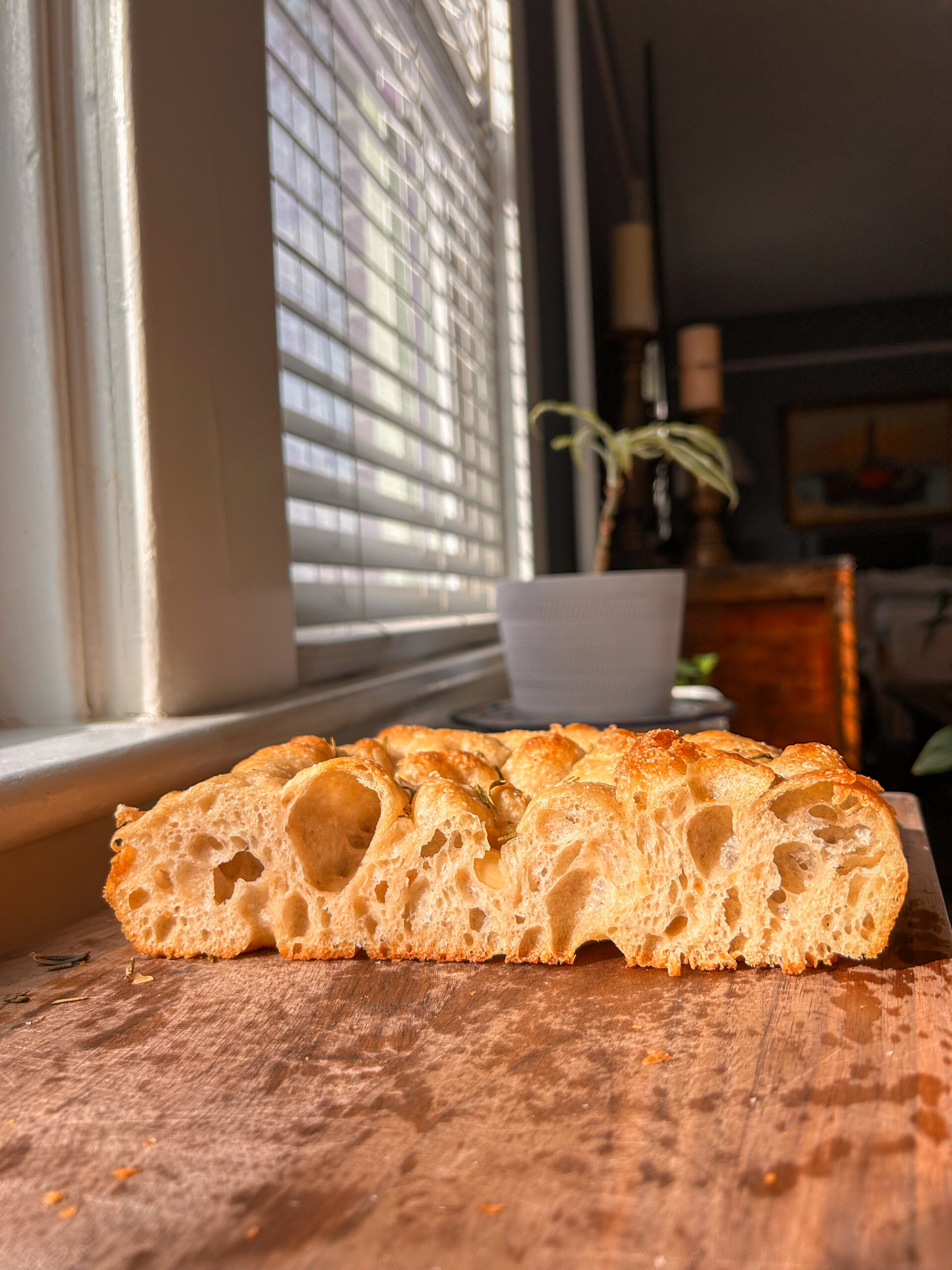
Ingredients
350g bread flour
50g whole wheat flour
100g all-purpose flour
10g honey
375g warm water
130g active sourdough starter
10g salt
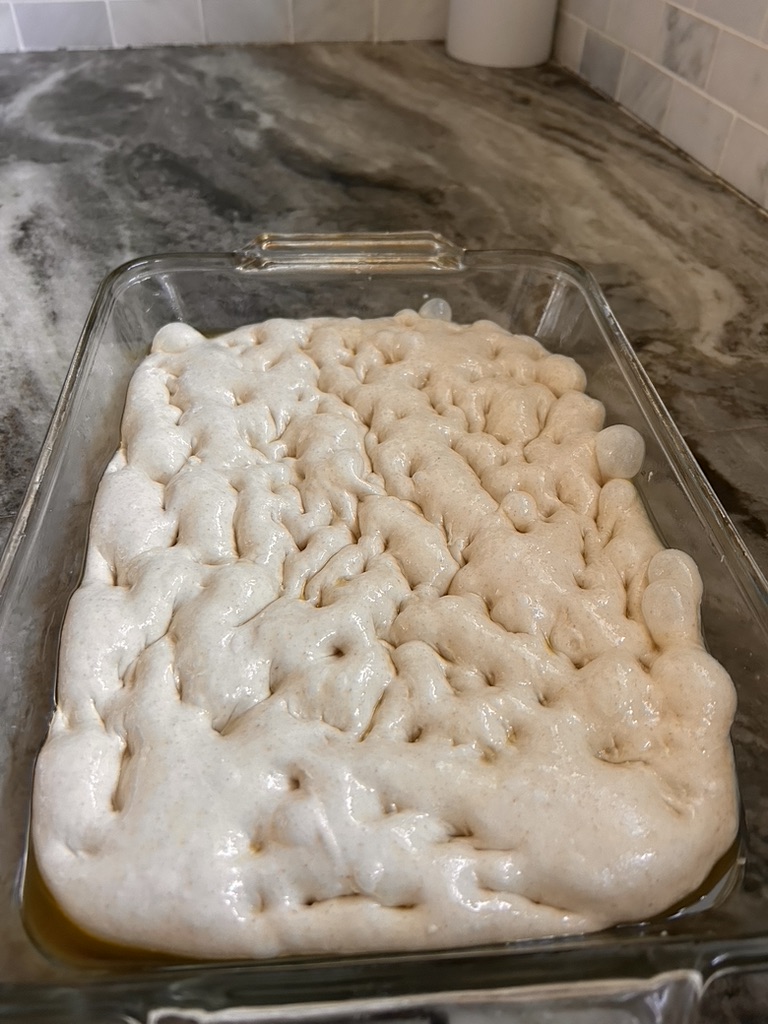
Instructions
1. Mix the Dough
In a large mixing bowl, combine the warm water and sourdough starter. Stir to dissolve the starter slightly. Add in the flours, honey, and salt. Mix until no dry bits remain. The dough will be shaggy and sticky—that’s perfect.
Cover the bowl and let it rest for 30 minutes.
2. Stretch & Fold (Optional, But Helpful)
Over the next 2 hours, perform 2–3 rounds of stretch and folds, spaced about 30–40 minutes apart. This helps build structure but isn’t mandatory for good results.
3. Bulk Fermentation
Cover and let the dough ferment at room temperature (21–23°C / 70–74°F) until doubled in size and jiggly, about 6–8 hours depending on the strength of your starter and room temp.
4. Cold Proof (Optional for Flavor)
For deeper flavor and better handling, transfer the dough to the fridge for 8–12 hours after bulk fermentation. This step is optional, but highly recommended.
5. Shape & Second Rise
Generously oil a 9×13-inch pan or baking tray with olive oil. Transfer the dough to the pan and gently stretch it to fill the space. Cover and let it rise for 2–4 hours, or until it’s puffy and jiggly again.
6. Dimple & Top
Preheat your oven to 450°F (230°C).
Drizzle more olive oil over the dough. With oiled fingertips, press straight down into the dough to create the classic focaccia dimples. Sprinkle with flaky sea salt, rosemary, thyme, or any toppings you like (caramelized onions, garlic, olives, tomatoes—it’s up to you).
7. Bake
Bake for 25–30 minutes, or until deeply golden brown on the top and bottom.
Let it cool in the pan for 10 minutes before transferring to a rack. Best enjoyed slightly warm, but honestly, it’s good at any temp.
Iski Note
Want extra crispiness? Bake on a lower rack or add a final broil for the last 1–2 minutes.
To store: wrap in foil or keep in an airtight container for 2–3 days. Reheat in the oven to bring back that crispy edge.
Don’t skip the olive oil—it helps the crust stay golden and prevents sticking.
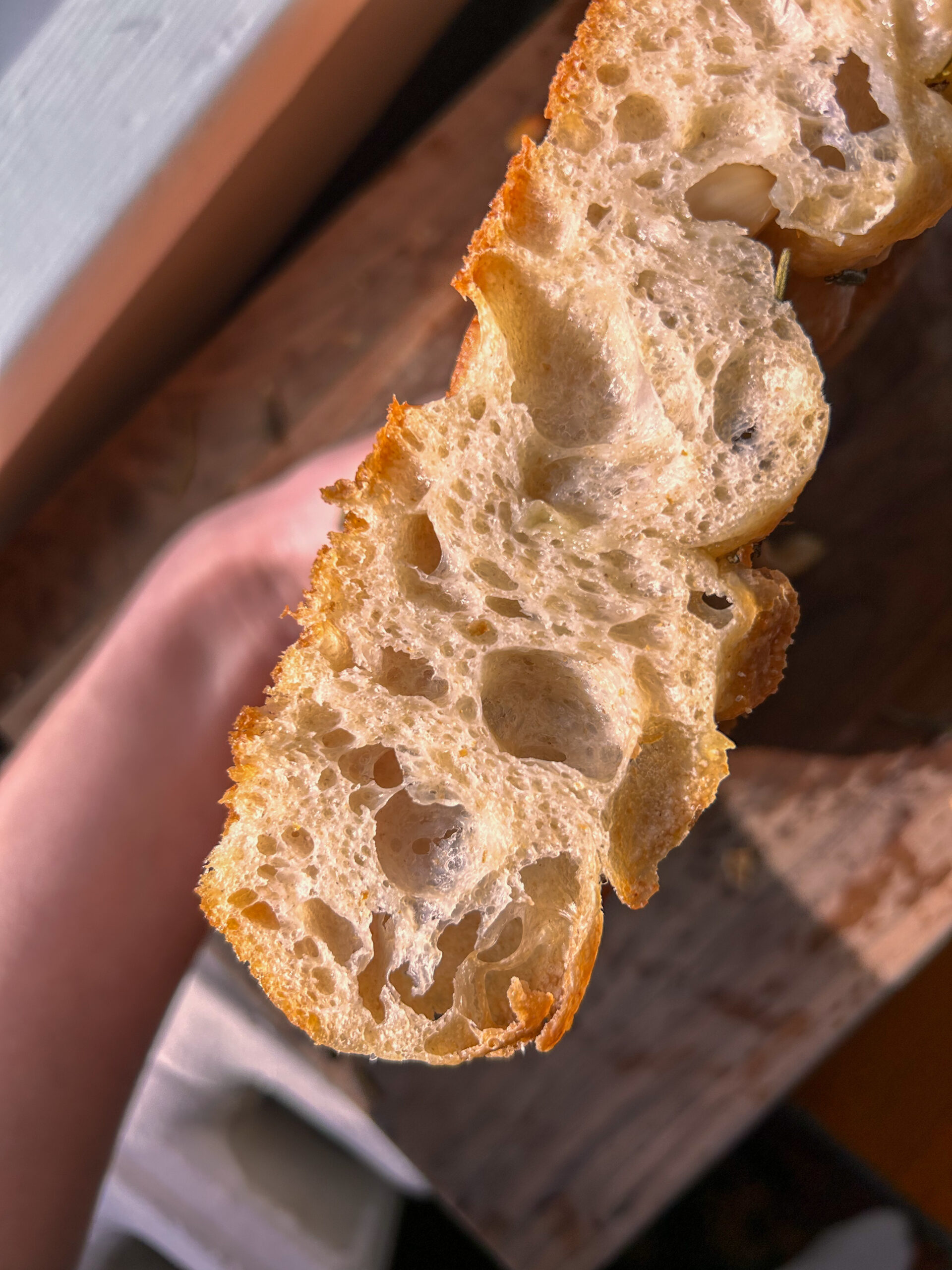
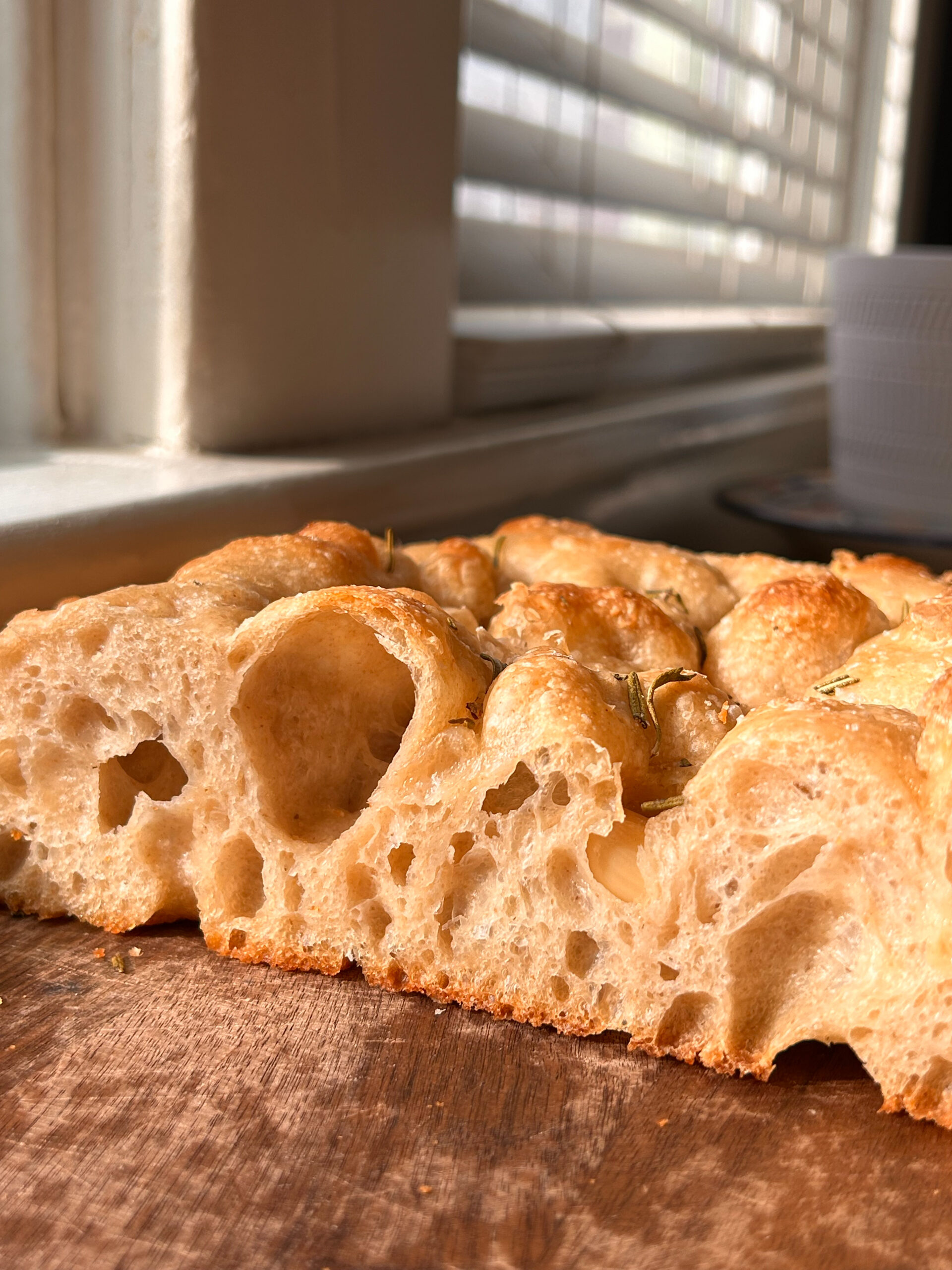
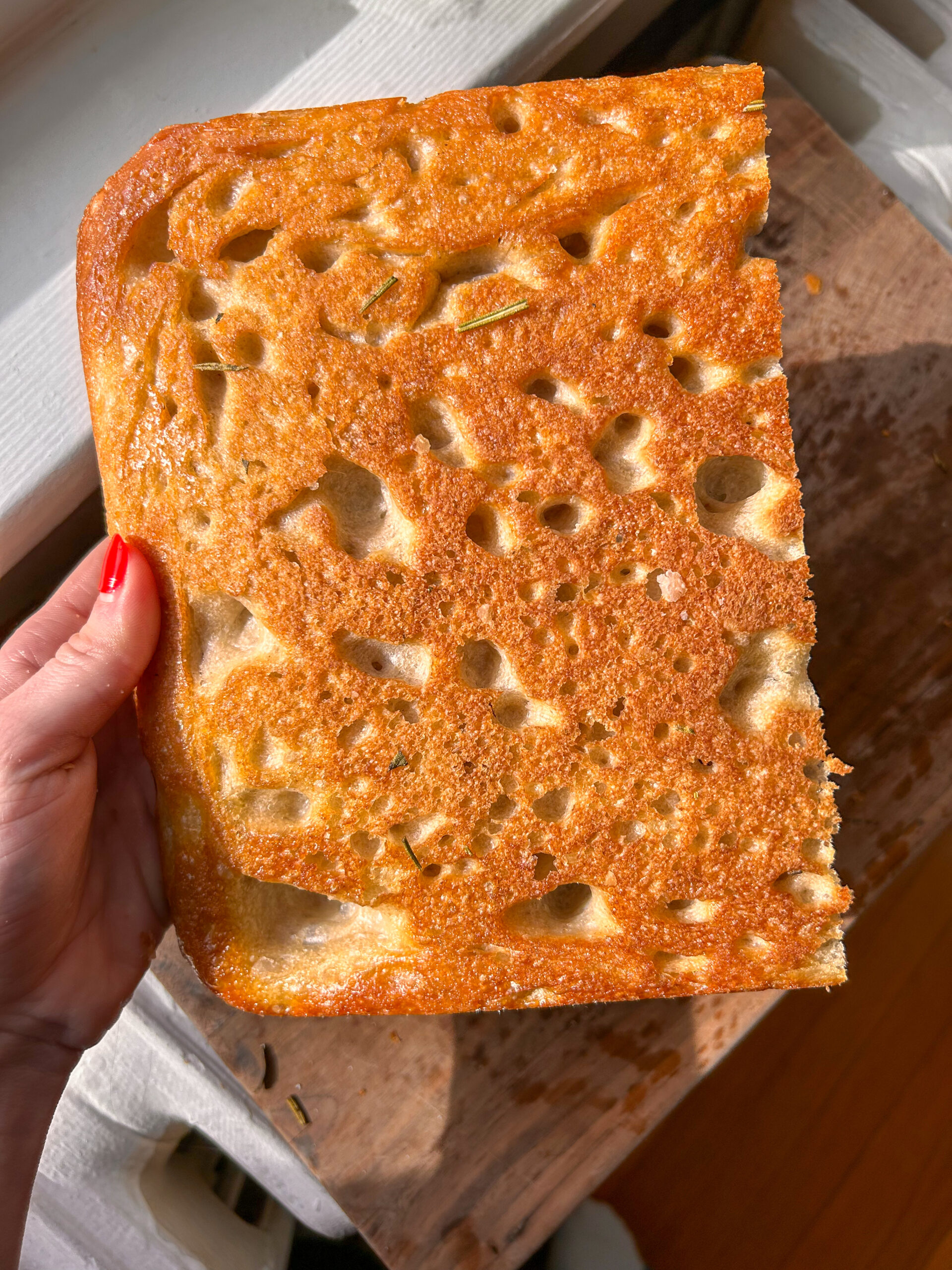
Why this recipe hits
This recipe hits because it’s basically stress-free: no kneading, no fancy shaping, and no starter drama. The dough is forgiving, the rise is flexible, and the final bread is always crusty, chewy, and full of flavor.
If you’re new to sourdough, this is the gateway recipe. If you’re experienced, it’s your lazy day favorite.
